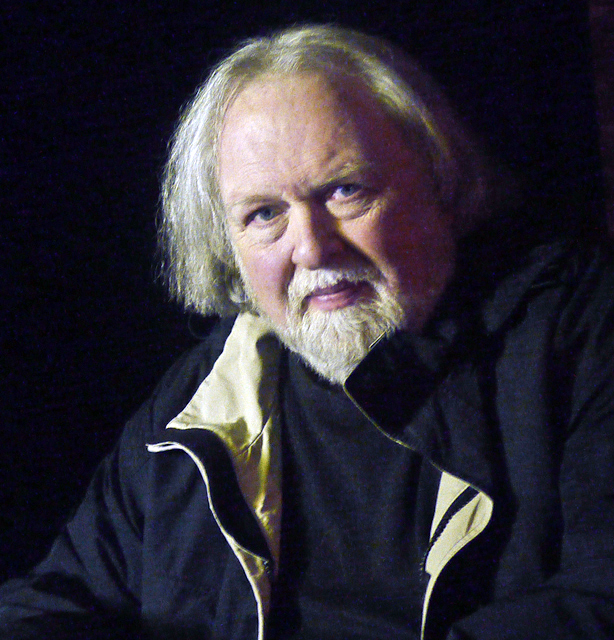The Age of Innuendo
While a kid working in television's monochrome era, I remember well when the FCC had a policy called the Fairness Doctrine. I didn't fully grasp what it meant, but the news director made it simple--when reporting the news, we were to be fair to those on all sides of an issue.
I understood the meaning of "fair," just as I grasped the term "objective"--a word bandied about heavily at J-school. Those journalism professors were smart enough to know that no human is truly objective--we are all defined by our upbringing and personal biases--but the job called for us to tell news stories based on facts, not opinion.
Those were such simple times. One only needed a knowledge of craft, common sense and some basic human values to understand how news reporting was supposed to be conducted.
On the few occasions that Walter Cronkite uttered words I had written on the national news, his personal gravitas alone was enough for me to know that I'd better get it right.
Times changed. After 1987, the Fairness Doctrine was history. Objectivity gave way--in both corporate and political life--to message management and image manipulation. It was usually about selling something.
A picture was worth a thousand words. That is until Photoshop. Then the old maxim, "seeing is believing" bit the dust.
Now, with the most advanced storytelling tools ever available, we have entered an age of innuendo. The old rules no longer seem to work in this truth-or-dare culture. Rather than seeking truth through objectivity, news and information programs--indeed, entire networks--seek to attract an audience through a distinctive point of view.
The distinctions of news and entertainment have blurred beyond recognition, not just for viewers, but for the people who make television programs.
When young people are getting their election news from the irreverent "Indecision 2004" segment on Comedy Central's "The Daily Show,'' are they better informed than the viewers of Fox News? Think about that one.
THEATER OF THE ABSURD
As we approach one of the most contentious elections in American history, it seems that every story--positive or negative about either candidate--is the subject of intense scrutiny and usually some attack on its validity, no matter how well-researched or documented.
Any news organization that produces a hard-hitting investigative report will find that report under attack, whether it's deserved or not. Bloggers and unrelenting commentators without portfolio ensure that. Just ask Dan Rather.
"The New York Times" publisher Arthur O. Sulzberger Jr., speaking recently at Kansas State University, noted that newspapers and broadcast stations that try to give unbiased information now face increased skepticism and even cynicism from the public.
"It is growing near to impossible to thoughtfully address our most pressing challenges," Sulzberger said. "The result is legislative gridlock at the federal level, at the state level and at the city level."
As some news organizations enjoy being "another actor in the political theater of the absurd," people either become disengaged or they vent their frustrations themselves, Sulzberger noted. Some, he added, view news as little more than another form of reality programming.
The publisher criticized talk radio for too often having a "trial by insult format," television programs that provide little more than "barroom chatter" and authors who increase book sales by becoming more shrill in their writing.
"We are starting to pay a high social price for this form of cheap entertainment," he said. "This results in younger generations being less interested in the news."
Too often, accuracy is sacrificed to the pressures to be first. The Internet and 24-hour news channels have fueled that pressure, Sulzberger said. He also acknowledged that incidents such as last year's Jayson Blair scandal at the Times, which led to the resignation of two top editors, also damaged news organizations' credibility.
What was particularly upsetting, he said, was that the Times received relatively few calls from people mentioned in Blair's stories.
"They just generally assumed that newspapers operated that way," he said.
BREAKING THE BUBBLE
So how does the average person now living within a saturated media bubble get a better handle on what is reality and what is not?
How do people that live and breathe fixes of speeding "information" know when they are being informed and when they are being hoodwinked?
By being media literate. Like all forms of literacy, media literacy begins at home in early childhood and should be nurtured at school. In our modern world, media literacy has become as important as knowing how to read and write. If a new generation is going to learn to think and make informed decisions, its members must learn to create and deconstruct rich media.
"We live in increasingly complex times, and unless we teach our children how to read about, watch, interpret, understand and analyze the day's events, we risk raising a generation of civic illiterates, political ignoramuses and uncritical consumers, vulnerable not only to crackpot ideas, faulty reasoning and putative despots but fraudulent sales pitches and misleading advertising claims," wrote David Shaw, the Pulitzer Prize-winning media technology columnist for the "Los Angeles Times."
Only by demystifying media can those who live within a cocoon of media messages begin to understand the artificial environment that disconnects them from reality.
Educational experiments have found that kids that learn to produce their own videos are far more discerning in dissecting the meaning of television commercials, programs and movies. When kids make and edit their own videos, they learn the techniques and tricks that can be used to manipulate the human mind.
Just as laptops have found a place in the classroom, so should low-cost video camcorders and cheap editing software. Modern essays should be expressed not only in words, but in pictures and sound.
Teaching media literacy is, in a sense, teaching critical thinking, and it should "start early, with simple activities in preschool, and continue through high school," said Tessa Jolls, president and CEO of the Santa Monica-based Center for Media Literacy, which provides guidance and curricula for school districts interested in taking on this most challenging task.
One would think it would be a no-brainer for schools to teach kids--who process more than 10 hours of media information each day--to learn to understand how media is used. Yet, media education is still very rare in school curricula.
Why? Many reasons are offered, from extra cost to the fact that American education is highly structured and resistant to change. Some say there are too few people who know how to train teachers, much less textbooks that support the subject. But the time for a media literate society is now. It's necessary if we are to dig ourselves out of the media of innuendo.
(For more information, check out the Center for Media Literacy at www.medialit.org )
The professional video industry's #1 source for news, trends and product and tech information. Sign up below.
Frank Beacham is an independent writer based in New York.

